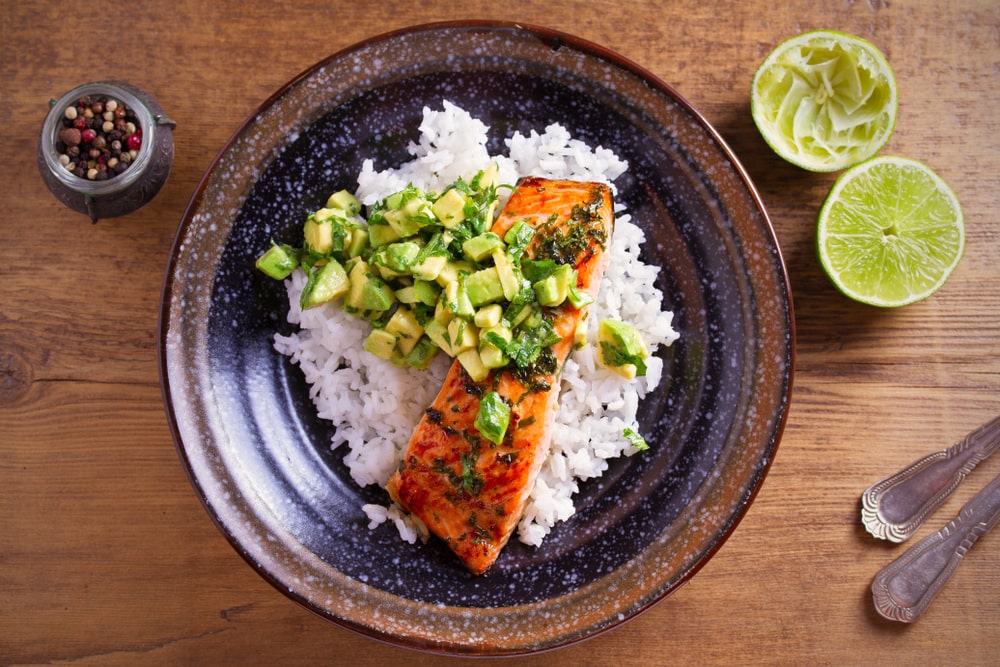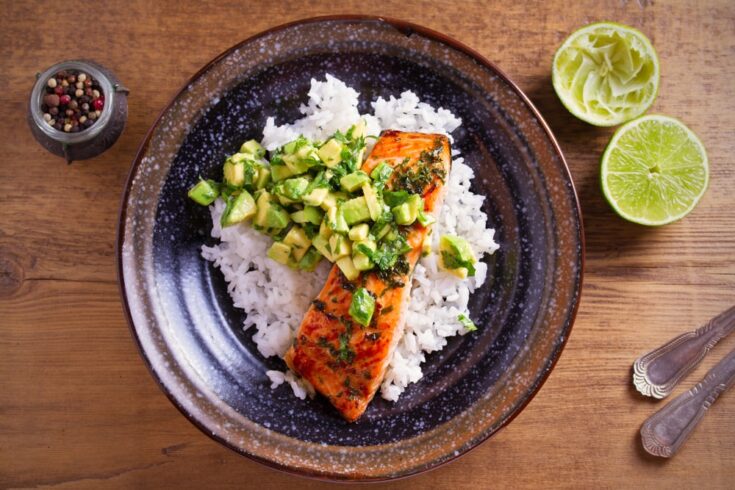Miso Salmon : This buttery salmon is coated in a savory-sweet miso glaze, then perfectly broiled to create a caramelized crust that’s bursting with umami that ideal for casual family meals to impressive dinner parties.

Why Miso Salmon?
Miso salmon is popular for good reason. It brings together Japanese-inspired flavors and a nutrient-dense profile that fits perfectly into a balanced diet. Miso, a fermented soybean paste, is rich in probiotics and adds a subtle sweetness that balances beautifully with the rich, fatty salmon.
This dish is:
- Quick to Prepare: With a marinade that requires only a handful of ingredients, this recipe is easy to whip up even on busy weeknights.
- Nutritious: Salmon is high in omega-3 fatty acids, while miso offers probiotics and essential nutrients.
- Customizable: Adjust the sweetness, saltiness, and flavor intensity by tweaking the marinade ingredients.
Tips & Tricks for the Best Miso Salmon
- Choose High-Quality Salmon: Look for wild-caught salmon if possible, as it typically has a more robust flavor and better texture.
- Don’t Overcook: Salmon can dry out quickly, so aim for a medium-rare center for optimal tenderness.
- Adjust the Sweetness: If you prefer a slightly sweeter glaze, add a bit more honey or brown sugar to the marinade.
- Make It Spicy: Add a touch of chili paste or sriracha for a spicy kick!
Miso Salmon Variations
Baked Miso Salmon
To make this recipe in the oven, preheat to 400°F. Place the marinated salmon on a lined baking sheet and bake for about 12-15 minutes, depending on the thickness of the fillet. Broil for the last 1-2 minutes for added caramelization.
Miso Salmon Bowl
Serve your miso salmon in a bowl with jasmine rice, avocado slices, edamame, and a sprinkle of sesame seeds. This balanced meal is perfect for a nutritious lunch or dinner.
Maple Miso Salmon
For a seasonal twist, replace the honey or brown sugar with maple syrup. This adds a touch of fall flavor to the dish.

How to Serve Miso Salmon
Miso salmon is versatile enough to pair with various side dishes. Here are some delicious serving ideas:
- Steamed Jasmine Rice: A classic pairing that complements the flavors of the salmon.
- Roasted Vegetables: Try asparagus, broccoli, or bell peppers for a colorful, healthy side.
- Soba Noodles: Serve with chilled soba noodles tossed in sesame oil for a refreshing, Asian-inspired side.
- Salad with Sesame Dressing: A light, crunchy salad provides a refreshing balance to the rich salmon.
Storing and Reheating Miso Salmon
Miso salmon stores well and can be enjoyed later, making it an excellent option for meal prep.
- Refrigerator: Store leftover miso salmon in an airtight container for up to 3 days.
- Freezer: Freeze cooked salmon for up to 2 months. Wrap it tightly in plastic wrap or store it in a freezer-safe container.
Recipe FAQs
What type of miso should I use?
White miso (also called “shiro miso”) is ideal for this recipe, as it’s milder and complements salmon well. If you prefer a bolder flavor, use red miso but reduce the quantity slightly.
Can I use frozen salmon?
Yes! Thaw the salmon thoroughly and pat it dry before marinating. Fresh salmon often has a better texture but high-quality frozen fillets work well too.
Can I make this dish gluten-free?
Yes, simply substitute the soy sauce with tamari, a gluten-free alternative.
How can I prevent the salmon from sticking to the pan?
Make sure the pan is well-heated and use a small amount of oil. Let the salmon cook undisturbed for a few minutes to allow the skin to crisp and naturally release.
Is miso salmon healthy?
Absolutely! Salmon is packed with omega-3 fatty acids, protein, and essential vitamins. Miso is a fermented product, offering probiotics that support gut health.
Miso Salmon

Miso Salmon : This buttery salmon is coated in a savory-sweet miso glaze, then perfectly broiled to create a caramelized crust that’s bursting with umami that ideal for casual family meals to impressive dinner parties.
Ingredients
Salmon Fillets
- 2 skin-on fillets, ideally less than 1 inch thick (4-6 oz each)
Marinade:
- 1 Tbsp sake
- 1 Tbsp soy sauce
- ¼ tsp toasted sesame oil
- 1 Tbsp mirin
- 2 Tbsp miso (any type; white miso offers a mild flavor)
Garnish (optional):
- 1 green onion, chopped
- ½ tsp toasted white and black sesame seeds
Instructions
Preparing the Salmon
- Cut & Marinate: If your salmon isn’t in fillets yet, portion it into 6 oz pieces for even cooking. Place the salmon skin side up in the marinade, ensuring every part is coated.
- Refrigerate for 1–2 hours (or 3 hours if it’s a thicker cut). Note: Don’t marinate overnight, or it’ll be too salty.
Cooking Options
For Thin Fillets (Under 1 inch) - Broil Method
- Preheat Broiler: Set to High (550ºF/288ºC) with the rack 9 inches from the heat source. Preheat for 5 minutes.
- Prep the Salmon: Line a baking sheet with foil and lightly oil it. Remove excess marinade from the salmon to prevent burning.
- Broil: Place salmon skin side down and broil for 10–13 minutes until the internal temperature hits 125–130°F (52–54ºC). No flipping needed! Prefer it medium-rare? Cook until 120ºF (49ºC).
For Thick Fillets - Bake Method
- Preheat Oven: Heat to 425°F (218ºC) and use a parchment-lined baking sheet.
- Remove Excess Marinade: Scrape off any extra miso to avoid burning.
- Bake: Place salmon skin side down and insert a thermometer into the thickest part. Bake for 18–20 minutes until the internal temp reaches 125–130°F. For a medium-rare finish, stop at 120ºF.
- Optional Char: Want a crispy top? Broil on High for 3 minutes, keeping an eye on it.
Notes
Serving Suggestions
- Sprinkle with toasted white and black sesame seeds and thinly sliced green onions. Serve alongside ginger rice or your favorite sides.
- Extra Tip: If you’re feeling resourceful, cook down the marinade (after diluting with water) for a quick sauce. Enjoy this flavorful dish that balances sweet, savory, and umami notes perfectly!
Final Thoughts
Miso salmon is the perfect blend of simplicity and elegance. With minimal prep time and easy-to-find ingredients, this dish is ideal for any night of the week. Plus, the recipe is flexible enough to adapt to your flavor preferences and dietary needs.
Try these other salmon recipes:
